Old Magazines with Michael John, no. 6: The Birth of A New Magazine, Lindbergh, and the Bird
My love for old aviation magazines started back in highschool when I would read the then-current issues, in particular FLYING MAGAZINE. Whenever a new issue of FLYING arrived, I immediately looked inside the back cover to see if Gordon Baxter’s “Bax Seat” column was there. I read that before anything else, savoring every word. Later these columns were compiled into two books: “Bax Seat: Log of a Pasture Pilot,” and “More Bax Seat: New Logs of a Pasture Pilot.” My copies are well worn, and I encourage you to check out a copy yourself!
95 YEARS AGO: A New Magazine Starts
FLYING MAGAZINE is 95 years old this month. The first issue was published in August 1927 under the name POPULAR AVIATION. It included a one-page editorial on “Popularizing Aviation,” a nice word play on the magazine’s name. It starts off by saying that “This is a changing world. The toy of yesterday becomes the necessity of today. The miracle of today is the commonplace of tomorrow.” Some interesting statements were included about this changing world:
- “The entire complexion of civilization is changing.”
- “Aviation will become one of the largest factors in this change.”
- “Transportation of goods and men will be via the air.”
- “Flying craft will dot the air.”
- “The air is free—no rails—no streets.”
It then went on to say that these things are here now and in a few more years it will be commonplace. The new magazine “is issued secure in the knowledge that these things are not a dream.” It further went on to state that the magazine will be a source of facts for this evolving endeavor. “Its columns will be easy to read, but authoritative; instructive, but written so that all can understand.” I think they’ve done a decent job of this over the course of their 95 years of publication!
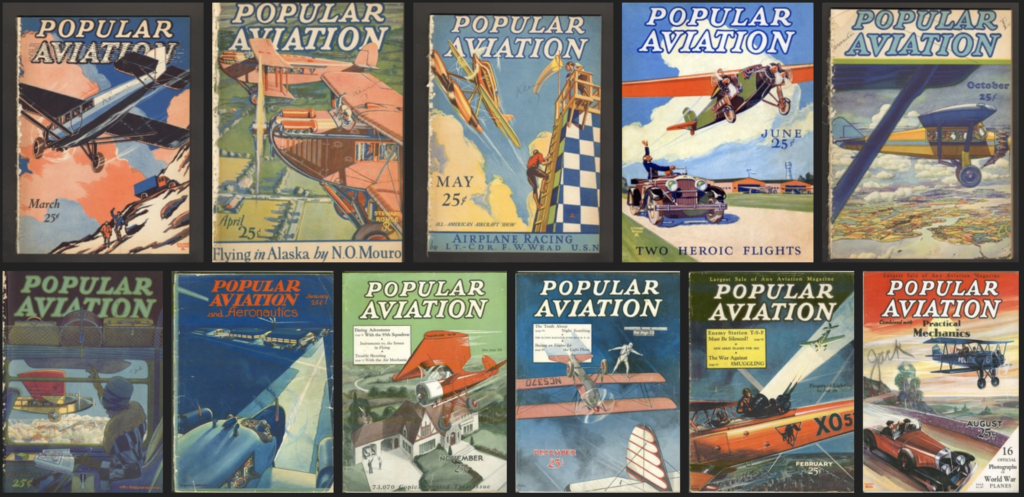
An array of early Popular Aviation covers – don’t you just love 1920s artwork?
The inaugural POPULAR AVIATION issue was published just three months following Charles Lindbergh’s famous flight, and the whole western world was Lindbergh-crazy. The magazine included an article, “The Outstanding Feat of the Ages,” reflecting the significance of his accomplishment. “Any extended story of the record breaking flight of Charles Lindbergh comes, at this time, as anti-climax,” the introduction states. “Never before has any event been given the newspaper and magazine space accorded to this deed.” Therefore, POPULAR AVIATION “merely touched the high places of this adventure” for those who might want to keep the magazine issue as a record of the feat.
I also will not dwell any further on Lindbergh’s accomplishment, except to add a quote of his printed on the page of “Forecasts and Prophecies:”
“It seems to me that the first development of transatlantic aviation will be the mail service. Think of the vast amount of important mail which now crosses the ocean in six, seven, and eight days. Supposed it could be transported in a day and a half. What would that not be business on two sides of the Atlantic?”
Lindbergh’s U.S. Goodwill Tour
Following his return from Paris, Charles Lindbergh embarked on a three-month goodwill tour of the United States. The Daniel Guggenheim Fund supported the tour to promote aviation to the public. Flying the “Spirit of St. Louis,” Lindbergh touched down in 48 states, visited 92 cities, gave 147 speeches, and rode 1,290 miles in parades. It is estimated that one out of every four Americans saw him in person during this tour.
The tour passed through the Midwest and Wisconsin in August. After a stop in Chicago, Lindbergh circled over Dixon, Rockford, and Beloit, then spoke to an estimated 100,000 locals crowded into a lakeshore park in Milwaukee.
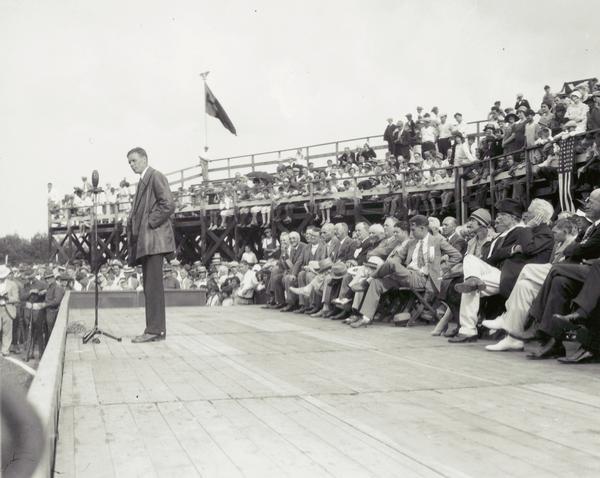
Lindbergh made a speech at Camp Randall right here in Wisconsin – only about 30 miles from the modern-day home of the Kelch Aviation Museum.
Lindbergh flew over Waukesha, Fond du Lac, and Oshkosh, dropping messages to the crowds gathered to see him overhead, before landing for his next stop in Madison. A 100-car motorcade took Lindbergh to Camp Randall Stadium where he spoke to 40,000 cheering fans. A year later Lindbergh would return to Madison to receive an Honorary Doctorate Degree from the University of Wisconsin.
Throughout his tour, Charles Lindbergh urged the nation to build a robust aviation infrastructure. It worked: Airmail usage increased dramatically following the tour, and the public began to view airplanes as a viable means of travel.
Anne Morrow and the “Lindbergh Bird”
Lindbergh undertook a second aviation goodwill tour of Latin American countries, starting in Mexico City where he was hosted by the U.S. Ambassador to Mexico and his family. Lindbergh hit it off with Anne Morrow, one of the Ambassador’s daughters; Charles and Anne wed two years later in 1929.
In 1930, Anne Morrow Lindbergh became the first U.S. woman to receive a glider pilot license. In August of that year the Lindberghs bought a Brunner-Winkle Bird BK biplane, in which Charles taught Anne to fly powered aircraft. Back in 1930, every aircraft manufacturer was clamoring for Lindbergh’s endorsement; it’s said he thought the Bird was the best trainer for his wife. In May 1931 Anne received her powered aircraft pilot license.
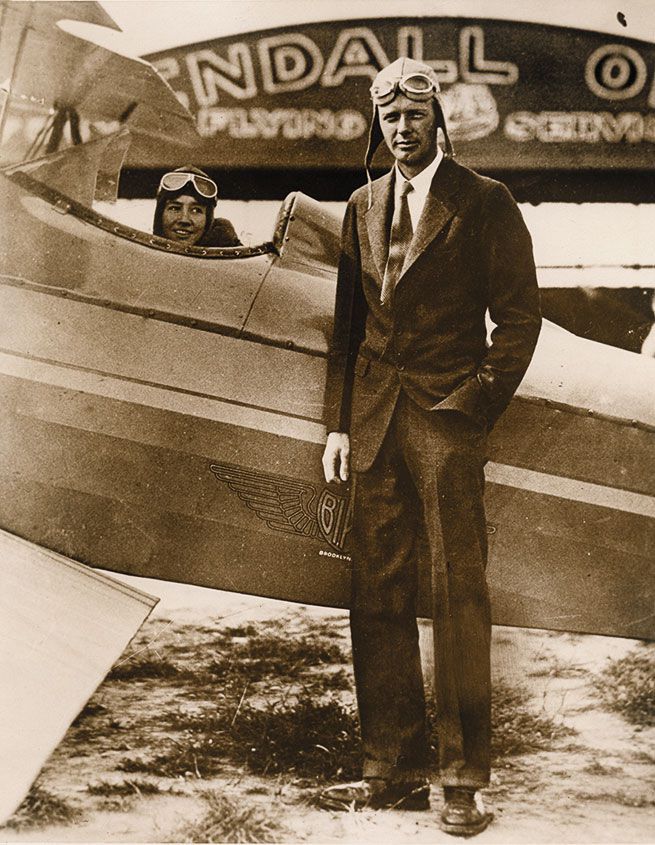
Anne in the cockpit of the Bird – note the distinct Bird logo partially obscured by Charles.
Anne flew the Bird biplane for a while before it was sold back to Brunner-Winkle. It changed hands many times before landing with the late Joe Fichera, a master aircraft builder for the National Air and Space Museum in Washington, DC. Fichera restored the plane to its current, exceptional condition. The Lindbergh Bird is currently owned by Michael Pangia and based in Maryland, where it still flies regularly.

The Lindbergh Bird on a recent flight. It’s very easy to handle and lands at a slow speed. The front cockpit was customized with a lower seat to accommodate Charles’s height.
This summer it was displayed at EAA Airventure in Oshkosh – and this winter it is on display right here at the Kelch Museum! A Wisconsin pilot and friend of the museum, Ed Lachendro, flew the Bird from Oshkosh to Brodhead, where it will be on display this winter only. Both this unique plane and I enjoy visitors, so stop by and see it while you have the chance!
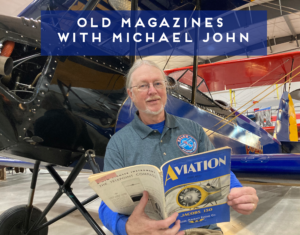
Michael John Jaeger is a former pilot, current volunteer, and forever cool person. His series of articles about aviation history as seen through old magazines is available on our website. Stay tuned for the next installment!
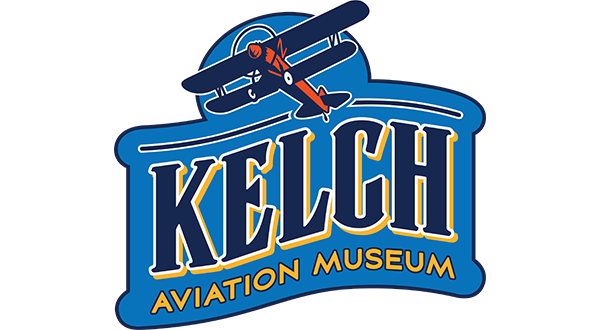

Comment(1)
Allen Penticoff says:
April 24, 2024 at 3:38 pmThe Bird is leaving us. We will miss it greatly. As a museum docent, I always brought this one plane to the attention of new visitors. Such a historic plane and such a pretty one, it was fantastic to have it with us, even if it was temporary. It is heading to its new home in the Smithsonian Air & Space Museum now where many more aviation/Lindbergh fans will have a chance to see it. Bye bye Bird! (04.17.24)